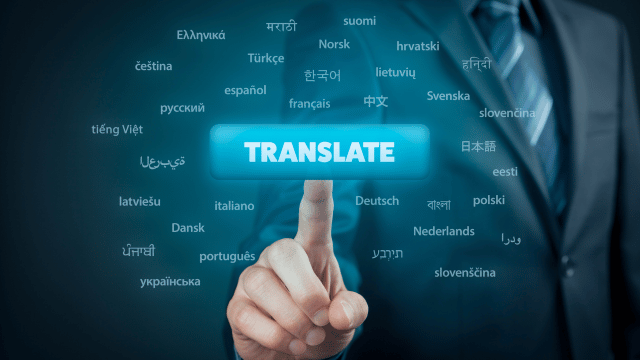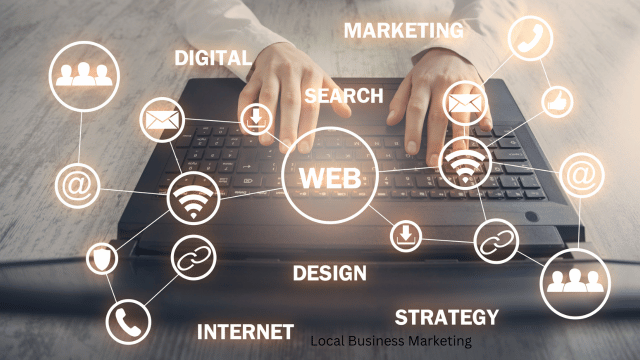In our interconnected world, translation is indispensable. As businesses expand and individuals connect across cultures, effective communication is paramount. Translation enables this by conveying ideas, information, and messages accurately and efficiently.
Translating goes beyond mere word conversion; it involves grasping nuances, cultural context, and idiomatic expressions unique to each language. Skilled translators possess linguistic proficiency and a deep cultural understanding, ensuring accuracy and cultural appropriateness to avoid misunderstandings.
Moreover, translation facilitates the exchange of knowledge and ideas globally. It grants access to information and resources unavailable in one’s native language, fostering collaboration and development. By bridging language barriers, translation promotes inclusivity and equal access to information, empowering individuals and businesses in our globalized world.
The benefits of professional translation services
While automated translation tools have become more prevalent, there is no substitute for the expertise and precision of a professional translator. Professional translation services offer a range of benefits that automated tools simply cannot match.
First and foremost, professional translators have a deep understanding of the languages they work with. They possess the linguistic skills and cultural knowledge necessary to accurately convey the meaning and intent of the original content. This ensures that the translated material is not only grammatically correct but also captures the nuances and nuances of the source language.
Moreover, professional translators are able to adapt the translation to the target audience, taking into account their cultural background and preferences. This ensures that the translated content resonates with the intended audience, making it more effective in achieving its intended purpose.
Common challenges in translation
While translation is a valuable tool for global communication, it is not without its challenges. There are several common challenges that translators often face when working with different languages and cultures.
One of the main challenges is the presence of idiomatic expressions and cultural references that may not have direct equivalents in the target language. Translators must find creative ways to convey the intended meaning without losing the essence of the original content. This requires a deep understanding of both languages and cultures involved, as well as the ability to think critically and creatively.
Another challenge is the need for domain-specific knowledge. Different industries and fields have their own specialized terminology and jargon, which may not have direct translations. Translators must familiarize themselves with the subject matter and stay up-to-date with industry trends and terminology to ensure accurate and effective translations.
How to choose the right translator
Choosing the right translator is crucial to ensure the quality and accuracy of the translated content. Here are some factors to consider when selecting a translator:
- Language proficiency: Ensure that the translator is a native speaker of the target language and has a strong command of the source language. This will ensure accurate and natural-sounding translations.
- Subject matter expertise: If your content is specialized or technical in nature, look for translators with experience and knowledge in that particular field. This will ensure that they understand the terminology and can effectively convey the intended meaning.
- Cultural understanding: Translators should have a deep understanding of the cultures involved to ensure culturally appropriate translations. Look for translators who have lived or studied in the target culture and are familiar with its customs and idiomatic expressions.
- Quality assurance: Choose translators who have a track record of delivering high-quality translations. Look for certifications or memberships in professional translation associations, as these indicate a commitment to quality and adherence to industry standards.
- Communication and collaboration: Effective communication is key to a successful translation project. Choose translators who are responsive, open to feedback, and willing to collaborate to ensure the best possible outcome.
By considering these factors, you can find a translator who meets your specific needs and ensures the success of your translation projects.
The role of technology in translation
Technology has revolutionized the field of translation, providing tools and resources that enhance the efficiency and accuracy of the translation process. From computer-assisted translation (CAT) tools to machine translation (MT) systems, technology has become an integral part of the translation workflow.
CAT tools, such as translation memory systems, help translators manage and reuse previously translated content. These tools store previously translated segments and suggest translations for similar content, reducing the time and effort required for repetitive translations. They also ensure consistency across different documents and projects.
Machine translation, on the other hand, uses algorithms and artificial intelligence to automatically translate content from one language to another. While machine translation has made significant advancements in recent years, it is still not as accurate or nuanced as human translation. Machine translation can be useful for getting a general understanding of a text, but it often requires post-editing by a human translator to ensure accuracy and quality.
Technology also plays a role in facilitating collaboration between translators and clients. Cloud-based translation management systems allow for seamless communication, file sharing, and project management. This streamlines the translation process, making it more efficient and transparent for all parties involved.
While technology has undoubtedly improved the translation process, it is important to remember that it is a tool, not a replacement for human expertise. Human translators bring a level of understanding, cultural sensitivity, and creativity that automated tools cannot replicate. Therefore, a combination of technology and human expertise is often the best approach to achieve accurate and effective translations.
Machine translation vs. human translation
The debate between machine translation and human translation is a topic of ongoing discussion in the translation industry. While machine translation has made significant advancements in recent years, it still falls short in several key areas when compared to human translation.
One of the main limitations of machine translation is its inability to accurately capture the nuances and context of the source language. Machine translation systems rely on algorithms and statistical models, which may not fully grasp the cultural and linguistic complexities of a text. As a result, machine-translated content often lacks the cultural sensitivity and accuracy that human translators can provide.
Furthermore, machine translation struggles with idiomatic expressions, colloquialisms, and linguistic nuances that are unique to each language. These elements are often lost or mistranslated by machine translation systems, leading to misunderstandings and miscommunications.
On the other hand, human translation offers several advantages over machine translation. Human translators possess a deep understanding of the languages and cultures involved, allowing them to accurately convey the meaning and intent of the original content. They can adapt the translation to the target audience, ensuring that it resonates with the intended readers.
Moreover, human translators have the ability to think critically and creatively, finding creative solutions to linguistic challenges and cultural differences. They can capture the tone, style, and nuances of the source language, making the translation sound natural and authentic.
While machine translation can be a useful tool for getting a general understanding of a text, it is always recommended to have human translators review and edit the content to ensure accuracy and quality. A combination of machine translation and human post-editing can provide a cost-effective and efficient solution for certain types of content.
The impact of translation on business growth
In a globalized world, translation plays a crucial role in driving business growth. Whether it’s expanding into new markets, reaching international customers, or collaborating with foreign partners, effective communication is essential for success.
Translation allows businesses to effectively communicate their products, services, and brand message to a global audience. By translating marketing materials, websites, and product documentation, businesses can reach potential customers in their native language, increasing their chances of engagement and conversion.
Moreover, translation enables businesses to adapt their offerings to local markets. By understanding the cultural nuances and preferences of different regions, businesses can tailor their products and marketing strategies to resonate with local customers. This localization approach not only enhances customer satisfaction but also builds trust and brand loyalty.
Translation also facilitates international collaboration and partnerships. By breaking down language barriers, businesses can communicate and work with partners, suppliers, and customers from different countries. This opens up new opportunities for growth, innovation, and knowledge exchange.
Translation for website localization
In today’s digital age, having a strong online presence is essential for businesses. However, simply having a website is not enough to reach a global audience. Website localization, which involves translating and adapting a website to suit the linguistic and cultural preferences of different regions, is crucial for success in international markets.
Website localization goes beyond mere translation. It involves adapting the content, design, and functionality of a website to meet the needs and expectations of local users. This includes translating not only the text but also images, videos, and other multimedia elements. It also involves ensuring that the website is culturally appropriate and user-friendly for the target audience.
Localization also takes into account the differences in search engine optimization (SEO) practices and keyword preferences in different regions. Translating keywords and optimizing the website for local search engines ensures that the website is easily discoverable by potential customers.
Translation for international marketing campaigns
Effective communication is at the heart of successful marketing campaigns, and translation plays a crucial role in reaching international audiences. Translating marketing materials, such as advertisements, brochures, and social media content, allows businesses to effectively convey their brand message and connect with customers from different cultures.
When translating marketing content, it is important to consider the cultural nuances and preferences of the target audience. What may resonate with one culture may not have the same impact in another. Translators must adapt the content to ensure that it is culturally appropriate and resonates with the local audience. This includes considering factors such as humor, idiomatic expressions, and cultural references.
Moreover, translation allows businesses to tailor their marketing strategies to local markets. By understanding the preferences, values, and buying behaviors of different regions, businesses can create targeted and personalized campaigns that are more likely to resonate with the local audience. This localization approach not only improves the effectiveness of marketing campaigns but also strengthens brand perception and customer loyalty.
In addition, translation ensures consistency and coherence across different marketing channels and touchpoints. Translators can maintain a consistent brand voice and message while adapting the content to suit the linguistic and cultural preferences of different regions. This creates a cohesive and seamless brand experience for customers, regardless of their language or location.
By investing in professional translation services for international marketing campaigns, businesses can effectively engage with global audiences, drive brand awareness, and increase their market share.
The future of translation in a digital world
As technology continues to advance, the field of translation is also evolving to meet the demands of a rapidly changing digital world. Several trends and developments are shaping the future of translation.
One of the key trends is the integration of artificial intelligence (AI) and machine learning (ML) into translation tools and systems. AI-powered translation engines are becoming increasingly sophisticated, with the ability to learn from vast amounts of multilingual data and improve their translation accuracy over time. This has the potential to enhance the speed and efficiency of the translation process, while also improving the quality of the translations.
Another trend is the rise of neural machine translation (NMT), which uses neural networks to translate content. NMT systems have shown promising results in terms of accuracy and fluency, surpassing the capabilities of traditional statistical machine translation. NMT is expected to become more prevalent in the coming years, further bridging the gap between human and machine translation.
Furthermore, the demand for real-time translation is growing, driven by the increasing need for instant communication in a globalized world. Real-time translation tools, such as speech recognition and machine translation apps, are becoming more advanced, allowing for seamless and immediate translation of spoken or written content. This has the potential to revolutionize international communication and collaboration, making language barriers virtually non-existent.
Conclusion
In a globalized world, translation is a powerful tool that enables effective communication and facilitates international collaboration. Whether it’s translating marketing materials, localizing websites, or bridging language barriers in business transactions, translation plays a crucial role in connecting people and cultures.
While technology has revolutionized the translation process, human expertise remains invaluable. Professional translation services offer a range of benefits, including linguistic proficiency, cultural understanding, and quality assurance. By choosing the right translator and embracing the possibilities of technology, businesses can unlock the power of translation and drive success in a globalized world.


